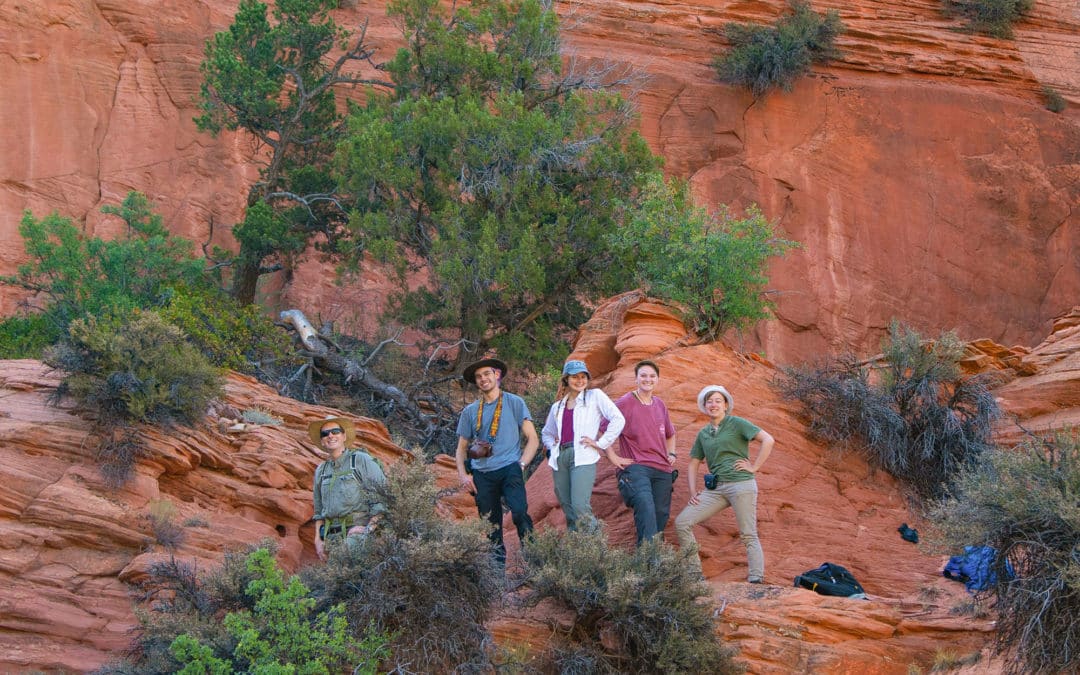The Utah Advanced Program team on the oxidized Navajo Sandstone, south-central Utah.
Submitted by Ben Surpless (Trinity University)
Ben Surpless (Trinity) and four Advanced Program students (Charley Hankla, College of Wooster; Madison Woodley, Mt. Holyoke College; Caroline McKeighan, Trinity; and Curtis Segarra, Trinity) used structural field mapping and video captured by a quad-copter drone to investigate rock deformation within a major normal fault transfer zone, south-central Utah. Our team used these field data to establish patterns of deformation between fault segments, revealing significant variations in both horizontal and vertical networks of fractures and deformation bands in the spectacular Jurassic-age Navajo Sandstone. This summer and fall, our research team has begun computer numerical modeling to test the evolution of the fault-related stress field, assessing how strain produced in modeling compares to strain documented in the field. These results have implications for groundwater flow, oil and gas exploration, and earthquake slip propagation at fault-segment boundaries. Our team will attend a Geological Society of America meeting in spring 2019.

